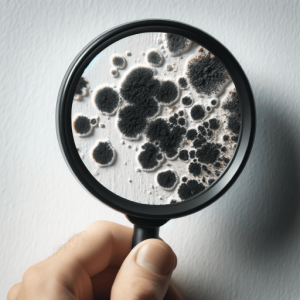Airborne Chemical Exposure poses a significant threat to our indoor environments, often stemming from everyday items like new paints, vinyl, carpets, and upholstered furniture. While these volatile organic compounds (VOCs) are commonly associated with that “new car smell,” they can also be found in newly constructed homes and workplaces, creating challenges for individuals with chemical sensitivities. Furthermore, water damage in homes can exacerbate VOC levels and introduce microbial volatile organic compounds (mVOCs) from mould and bacteria. Understanding the sources and impacts of these airborne chemicals is crucial for maintaining a healthy indoor environment and preventing adverse health effects.
Volatile organic compounds (VOCs)
VOC’s are emitted from new paints, vinyl, carpets, and upholstered furniture, such as mattresses, to name a few. These compounds are often most noticeable in new cars. Individuals with chemical sensitivities may find it extremely challenging to tolerate the presence of new cars, mattresses, and recently constructed homes or workplaces.
In water-damaged homes, VOC levels can increase as mould and bacteria begin to break down man-made materials, releasing higher levels of VOCs like formaldehyde. Additionally, mould and bacteria produce their own VOCs, known as microbial volatile organic compounds (mVOCs).
Microbial Organic Compounds (mVOCs)
Biological contaminants encompass bacteria, mould, viruses, animal dander, cat saliva, house dust mites, cockroaches, and pollen. These pollutants originate from various sources. By controlling the relative humidity level in a home, the growth of some biological sources can be minimised, but these organisms need to be removed.
Sources of Contamination
Standing water: water-damaged materials, or wet/damp surfaces, serve as breeding grounds for moulds, bacteria, and insects.
House dust mites: which are a source of potent biological allergens, thrive in damp, warm environments. It is the residue dust mites produce in their excreta from consuming human skin cell bacteria that can trigger an innate immune response.
Investigating Hidden Environmental Issues
When family members exhibit signs of Chronic Inflammatory Response, it’s crucial not to overlook the possibility that a seemingly clean home might be the culprit. Engaging a Forensic Microbial Investigator can help uncover underlying problems.
If illness persists despite living in an apparently clean environment, it may be due to hidden issues such as previous water damage, moisture from the subfloor, or poor building practices that are not visible to the naked eye.
The Hidden Threats in Your Home
Imagine living in a home for over 10 years with no signs of major health issues. Suddenly, one family member falls seriously ill due to inflammation triggered by a viral infection. You might dismiss the home as a factor in the health decline, but it’s essential to reconsider. Testing the individual for Haplotype susceptibility could reveal a sensitivity to mould and bacteria.
Next, have the home tested using Next Generation Sequencing to identify mould and bacteria exposure. Look for water-damaged mould species, which indicate previous water ingress, and bacteria from wet or marine environments. These findings, much like an investigative crime novel, can uncover hidden threats. The mould and bacteria produce microbial volatile organic compounds (mVOCs), which can disrupt cell signaling and gene expression, leading to serious health issues.

